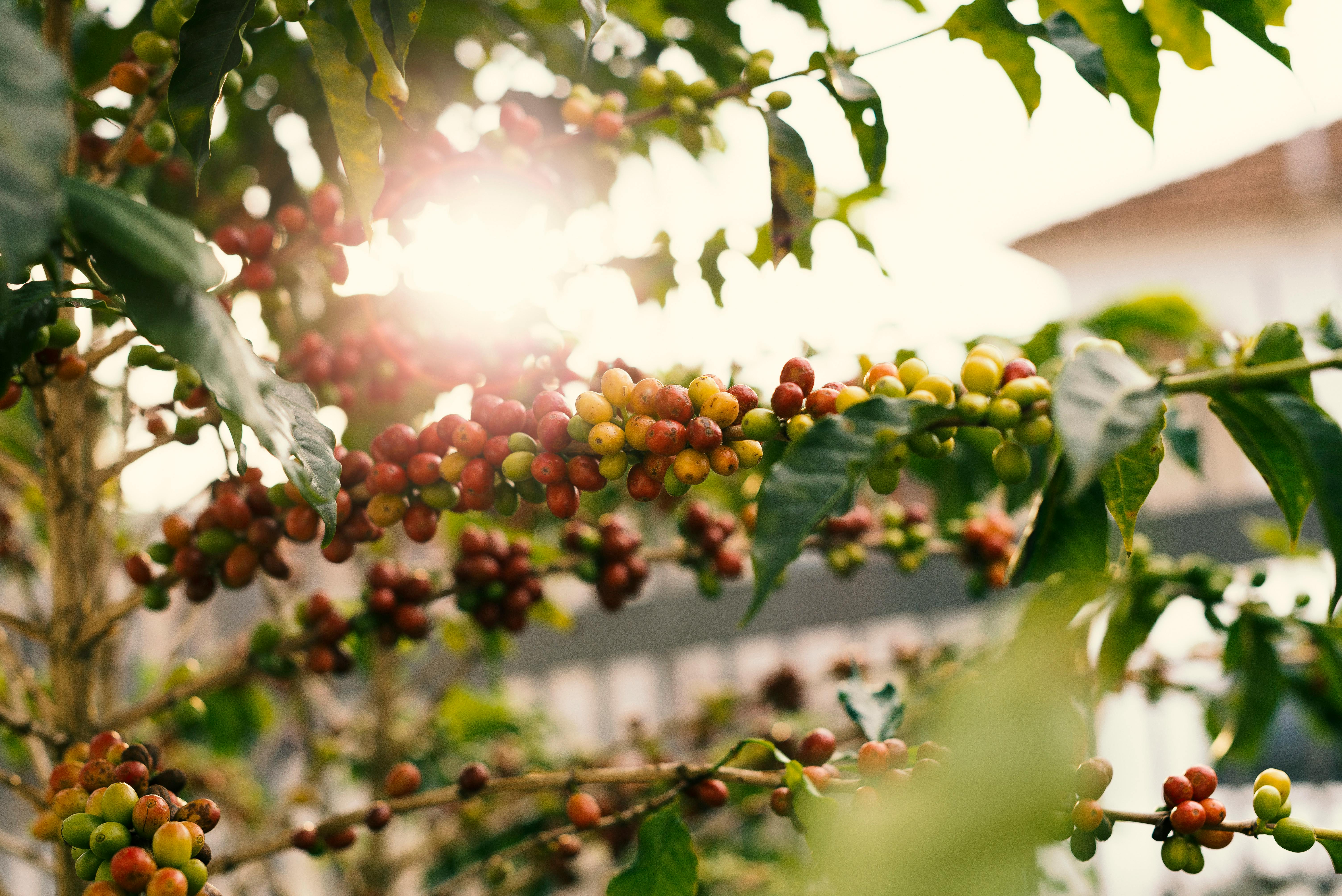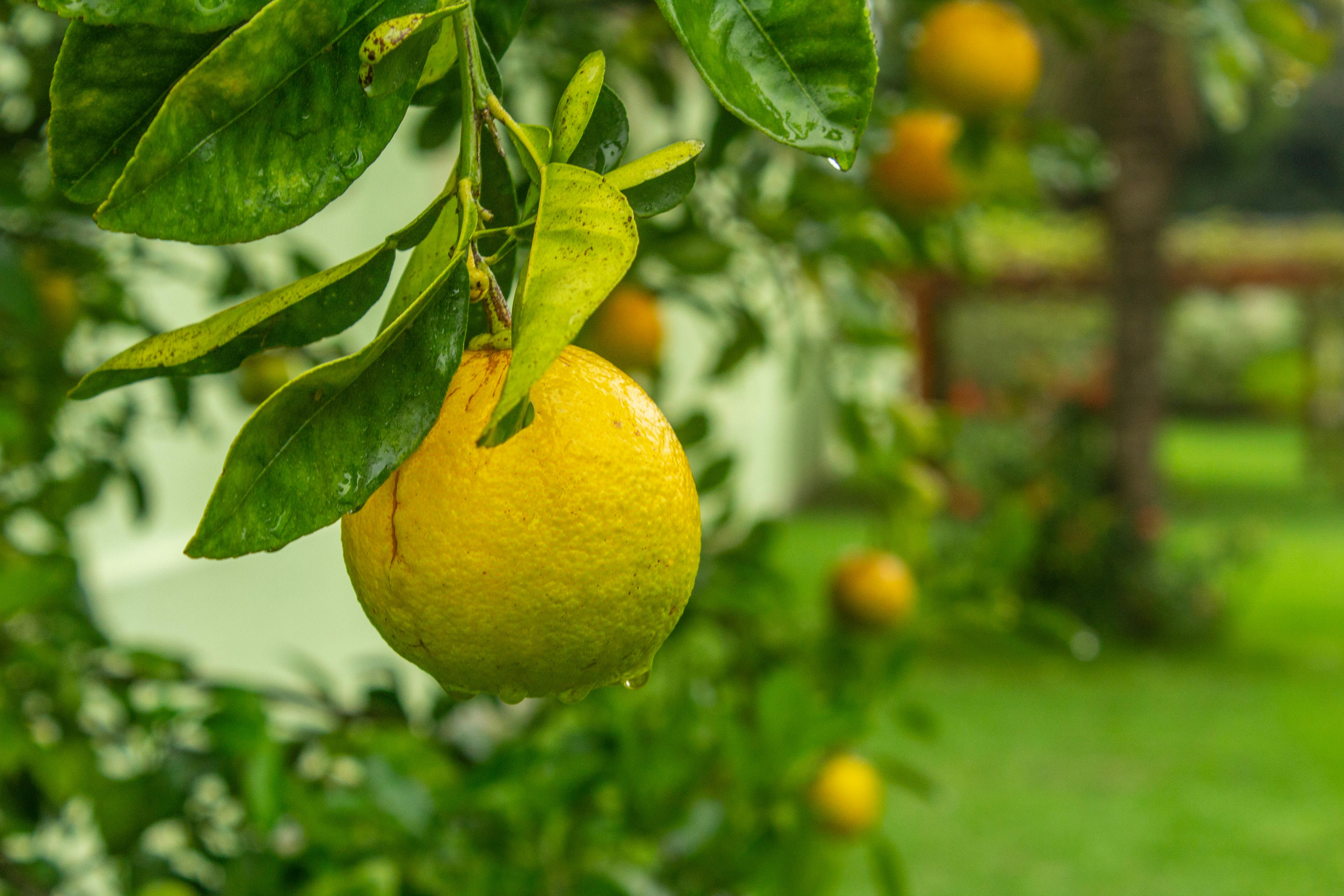Lemon trees are a popular choice for both home and commercial growers. They are easy to care for and produce a good amount of fruit each season. However, one of the most common questions people have when growing lemon trees is how long it will take before they start producing fruit. In this article, we’ll discuss the timeline for a lemon tree to produce fruit, as well as some tips on how to help it along.It typically takes between three and five years for a lemon tree to produce fruit. However, this timeline depends on the variety of lemon tree, growing conditions, and care given to the tree.
Climate
The climate plays a major role in determining how long it takes for a lemon tree to produce fruit. Lemon trees thrive in warm climates, with temperatures between 65-85 degrees Fahrenheit. If temperatures drop below 55 degrees Fahrenheit, the tree will not produce fruit. Additionally, lemon trees require full sun exposure for at least six hours a day for optimal growth and fruit production. If the tree is not receiving enough sunlight, it will take longer for the tree to bear fruit.
Soil
The soil type and quality also affects how quickly a lemon tree will produce fruit. In order for the tree to grow and produce fruit, it needs well-draining soil with plenty of organic matter. If the soil is too hard or dense, this can inhibit the growth of the tree and delay when it produces its first fruits. Additionally, if there is not enough nutrients in the soil, this can lead to poor growth and slow down fruiting.
Variety
The variety of lemon tree also affects how quickly it bears fruit. Some varieties are known to be more productive than others and may bear their first fruits within two years of planting while others may take up to five years or more before they bear any fruits. Additionally, some varieties are more cold tolerant than others which can help them survive colder temperatures and still produce fruits.
Watering
Proper watering is essential for a lemon tree to grow and produce its first fruits in a timely manner. The soil should be kept moist but not soggy as overwatering can lead to root rot which can stunt or even kill the tree altogether. It is important to water consistently during dry periods so that the roots don’t dry out completely as this will slow down or prevent fruiting altogether.
Fertilizer
Applying fertilizer regularly helps keep lemon trees healthy and productive by providing them with essential nutrients that they need to thrive and bear fruit quickly. Applying fertilizer once every two weeks during the growing season helps ensure that your lemon trees have enough nutrients available so they can grow strong roots as well as lush foliage which both contribute to faster fruiting times.
Average Timeframe for a Lemon Tree to Produce Fruit
The average timeframe for a lemon tree to produce fruit is typically between 4-6 years. It can take even longer if the tree is not properly cared for. The optimal conditions for a lemon tree to produce fruit include full sun exposure, ample water, and nutrient-rich soil. Pruning and fertilizing the tree also helps to promote healthy growth and fruit production.
Once the tree begins to flower, it will take about 6 months before the flowers turn into lemons. The first few years may not yield as much fruit as expected, but over time the production should increase with proper care. During this period, it is important to monitor the growth of the tree and make sure it is getting enough sunlight, water, and nutrients.
It is also important to be aware of pests that may be attracted by the lemons or other fruits on the tree. Regularly checking for signs of infestation and treating as needed can help prevent damage from pests. Additionally, removing dead leaves or branches can help promote healthy growth and reduce disease risk.
The amount of time it takes for a lemon tree to produce fruit will vary depending on several factors such as climate, soil type, watering schedules, nutrient levels, and even pruning practices. With proper care and monitoring, a lemon tree can start producing fruit within 4-6 years or sooner if conditions are right.
Conditions Necessary for a Lemon Tree to Produce Fruit
Lemon trees require specific environmental conditions in order to produce fruit. The tree must have access to full sunlight for at least 6 hours a day and well-draining soil. It is also important that the tree has access to adequate water during the growing season; lemon trees need about 1-2 inches of water per week. It is also important to fertilize the tree with a balanced fertilizer once or twice a year. Temperature is another factor in lemon tree production; most lemon trees can tolerate temperatures between 25°F and 110°F but will become dormant when temperatures dip below 30°F. Pruning the tree is also necessary as it will help with air circulation and increase fruit production. Finally, pollination is key for producing lemons as it helps create viable seeds. Wind, bees, or other pollinators can help with this process.
By providing these conditions, a lemon tree can be encouraged to produce more lemons which can be harvested when ripe. If any of these conditions are not met, then the lemon tree may not produce fruit at all or may produce less fruit than expected. Therefore, it is important to ensure that all conditions are properly met in order for a healthy and productive lemon tree.
Differences in Varieties of Lemon Trees and Their Timeframes to Produce Fruit
Lemons are among the most popular citrus fruits, and there are a wide variety of lemon trees available for growing. Different varieties of lemon trees can have vastly different growth habits, such as flowering times, fruiting times, and how long it takes to produce fruit. This makes it important to understand the differences between the various types of lemon trees before deciding which one to plant in your garden.
One of the most popular varieties is the Meyer lemon tree. This type of tree is known for its fragrant flowers and produces a small, thin-skinned variety of lemon with a sweeter flavor than other types. The Meyer lemon tree is also relatively fast-growing and can begin producing fruit within one to two years.
The Eureka lemon tree is another popular variety that produces large fruits with thick skins and acidic flavor. This type of tree takes longer to produce fruit than other varieties, typically three to four years after planting. The Eureka tree also needs more sunlight than other types, so it is best suited for areas with lots of direct sun exposure.
The Lisbon lemon tree is a hardy variety that can tolerate colder temperatures better than other types. It produces thick-skinned lemons with a strong tart flavor that are ideal for making marmalade or preserves. The Lisbon lemon tree also tends to be slower-growing than other types and may take up to five or six years before producing fruit.
The Bearss lime tree is a hybrid citrus fruit that resembles a small lime rather than a lemon but has similar characteristics in terms of growth habits and time frames for producing fruit. These trees have an upright growth habit, similar to an apple or pear tree, and can begin producing fruits within two or three years after planting.
No matter which variety you choose, having an understanding of the differences between them will help you pick the best one for your garden based on your climate conditions and desired results. With proper care and attention, any type of lemon tree can produce delicious lemons in no time!

Speeding Up the Time It Takes for a Lemon Tree to Produce Fruit
Growing lemons can be a rewarding experience, but it can take years for a lemon tree to produce fruit. Luckily, there are some methods that can help speed up the process of producing lemons from your tree.
One way to speed up the time it takes for a lemon tree to produce fruit is to provide it with adequate sunlight and water. Lemon trees need plenty of sunlight and water in order to grow and produce fruit. Make sure your lemon tree gets at least six hours of direct sunlight each day and that it is watered regularly so the soil remains moist but not soggy. If your tree starts to wilt, it may need more water or fertilizer.
Another way to speed up the time it takes for a lemon tree to produce fruit is by pruning away any dead or diseased branches. Pruning will help encourage new growth and increase airflow around the tree, which can help promote healthy growth. Additionally, pruning will also reduce competition between branches for resources like light and nutrients, allowing the healthier branches more access to these essential items.
Fertilizing is another great way to speed up the time it takes for a lemon tree to produce fruit. Use a balanced fertilizer such as 8-8-8 or 10-10-10 at least once every couple of months during the growing season (April through October). Make sure not to over fertilize as this can lead to leaf burn or other issues with your tree’s health.
Finally, make sure you are planting your lemon tree in an area with well-draining soil that provides good air circulation around its roots. This will help ensure that your plant has access to adequate nutrients and water while avoiding issues such as root rot or pests that may slow down its growth and production of fruit.
With these tips in mind, you should be able to speed up the time it takes for your lemon tree to produce fruit so you can enjoy fresh lemons from your own backyard!
Signs That a Lemon Tree Is Ready to Bear Fruit
When the lemon tree is ready to bear fruits, it will give off certain signs that can be easily detected. These signs include the production of flowers, changes in leaves and stems, and the presence of fruit buds.
The first sign of a lemon tree that is ready to bear fruits is the presence of flowers. The flowers should be white or yellowish in color and will have a strong fragrance. Once the flowers appear, they will eventually give way to small green buds which are the precursors to lemons.
The second sign of an impending harvest is changes in the leaves and stems. As the tree matures, it will produce larger leaves that are darker green in color. Additionally, thicker stems will emerge from the trunk as more fruit-bearing branches grow out from it.
The third sign that a lemon tree is ready to bear fruit is the presence of fruit buds. These buds are small and green in color and are generally located at the ends of branches. As these buds grow over time, they will eventually develop into lemons once they start to ripen.
These are some of the most common signs that indicate a lemon tree is ready to bear fruits. If you notice any of these signs on your own lemon tree, then you can expect a harvest very soon!
Incorrect Planting
One of the most common mistakes that can delay the bearing of fruit by a lemon tree is incorrect planting. If a lemon tree is planted too deeply in the soil, it can cause the root system to become overly wet and lead to root rot. It is important to ensure that the tree is planted at a depth that will allow for proper drainage. Additionally, poor soil quality can also lead to issues with root and foliage growth, so it is important to select a good-quality potting mix when planting a lemon tree.
Inadequate Watering
Another mistake that can slow down the bearing of fruit by a lemon tree is inadequate watering. Lemon trees need regular watering in order for them to produce healthy foliage and fruit. Too little water can cause the leaves to yellow and wilt, while too much water can lead to root rot. It is important to make sure that the soil stays moist but not soggy, as this will ensure optimal growth conditions for your lemon tree.
Insufficient Fertilization
Insufficient fertilization can also delay bearing of fruit by a lemon tree. Lemon trees require regular fertilization in order to keep them healthy and productive. Applying fertilizer too often or not enough are both bad for your lemon tree’s health and productivity. It is best to use a balanced fertilizer that contains nitrogen, phosphorus, and potassium in order to provide your tree with essential nutrients.
Lack of Sunlight
A lack of sunlight can also slow down bearing of fruit by a lemon tree. Lemon trees require full sun in order for them to produce healthy foliage and abundant fruit. If your lemon tree does not receive adequate sunlight, then it will struggle to thrive and may not produce any fruit at all. Placing your lemon tree in an area with at least 6-8 hours of direct sunlight per day will help ensure optimal growth conditions.
Pest Infestation
Pest infestations are another common mistake that can affect the bearing of fruit by a lemon tree. Pests such as aphids, whiteflies, mealybugs, mites, and scale insects feed on plants’ sap and cause damage to leaves or fruits. In order to reduce pest infestations on your lemon tree, it is important to regularly inspect it for signs of pests or damage caused by them and take appropriate action if necessary.

Conclusion
The time it takes for a lemon tree to produce fruit depends on several factors, such as the variety, climate, and the care given to the tree. On average, it can take anywhere from three to eleven months. Additionally, it is important to understand that a lemon tree may produce fruit more than once a year in certain climates. In order to ensure the best results, it is important to provide adequate sunlight and water for your lemon tree and prune regularly.
By following these steps you can expect your lemon tree to produce fruit within a few months of planting. However, it is important to note that different varieties may take longer than others. With proper care and patience you can enjoy fresh lemons from your own backyard in no time!



